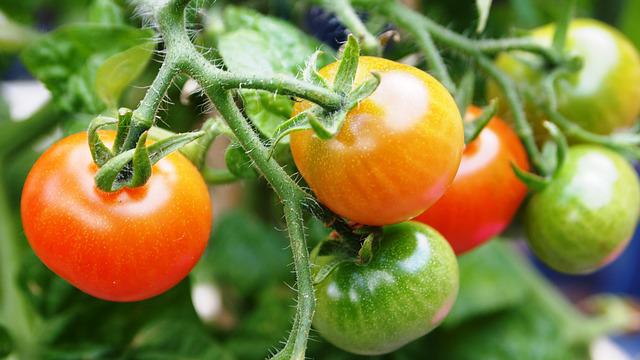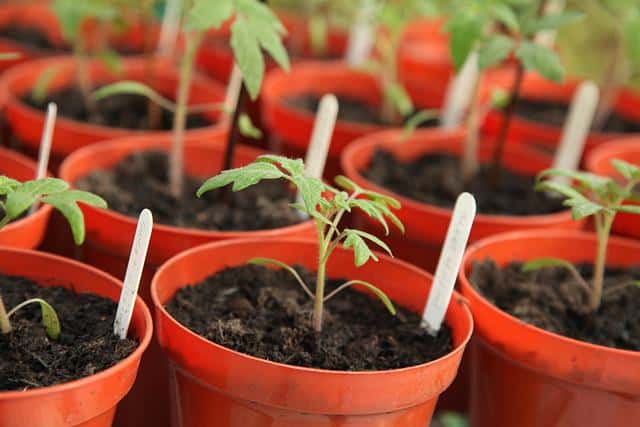Tomatoes are a bright, cheery component of any garden, whether their distinction as a fruit instead of a vegetable freaks you out or not! Tomatoes are simple to grow. However, if you’re new to growing tomatoes, you may be wondering: can tomatoes grow in direct sunlight?
In this article, we’ll not only answer this question, but our research equips us to tell you the answer to a few related questions, too, like whether or not morning or afternoon sun is better for tomatoes.
Can Tomatoes Grow in Direct Sunlight?

Tomatoes can grow in direct sunlight. A tomato plant requires six to eight hours of full, direct sunlight a day. However, different stages of sunlight are important to the distinction of how much your particular tomato plant may need.
The key is found in light versus heat: tomato plants need UV rays from sunlight, but can receive damage from too much heat.
Advantages and Risks to Growing Tomatoes in Direct Sunlight
Below are some advantages to different stages of sunlight and why a tomato plant needs them which you should take into account.
1. Advantages of Growing in Morning Sunlight

A tomato plant uses photosynthesis like most flora. During this process, the greenery in plants called chlorophyll is busy absorbing light; specifically, ultraviolet light. This ultraviolet light is at it’s most intense during the very earliest part of the day, even if it isn’t hot outside.
2. Advantages of Growing in Midday Sunlight
When the sun is highest in the sky, at midday, the tomato plant is sure to get the direct sunlight that helps it to flourish. This is great for the light absorption that the tomato plant will engage in; however, remember that intense heat can cause damage to a tomato plant. This risk will be explored below.
3. Advantages of Growing in Afternoon Sunlight
Like the morning sunshine, afternoon sunlight is a great source of that UV light the tomato plants benefit from without the added risk of harsh heat levels. Be sure that there are no other plants or building structures keeping your tomato plant from getting western-facing sunshine.
4. Risks of Growing in Direct Sunlight

Although tomato plants do thrive in full, direct sunlight, it is the light that they need, not the heat. Heat can lead to stress in the tomato plant, causing it to dry up and shrink. A tomato plant needs plenty of water so that it can withstand heat, but a sun shade applied during the hottest hours is also helpful.
5. Risks of Growing in Too Much Shade
After reading the above point, it may be tempting to avoid direct sunshine during the hottest part of the day. However, not only can this lead to low nutrients during photosynthesis, but it can result in wet leaves, which lead to fungal infection in tomatoes. Balance is key when shading the plant!
After taking the above risks and benefits to growing tomatoes in direct sunlight into account, you should find yourself with a healthy, happy tomato plant that is ready to provide you with fresh fruits!
Also read: Black Worms On Tomato Plants
Outro
So, can tomatoes grow in direct sunlight? The answer is a resounding: yes! When you’re deciding where to plant your tomato, rest assured that the tomato will love the direct access to UV rays from full sunlight all day.
The risk you must be prepared for is the effect of intense heat: remember to water the tomato and shade it partially during the hottest hours of the day.
Frequently Asked Questions
Can tomatoes get too much sun?
Tomatoes do thrive in direct sunlight, but unfortunately, they can get too much sun. When this happens, it is known as “sunscald,” and you’ll notice it’s effects on the tomato fruit via brown or green patches.
Sunscald can be avoided by allowing your tomato plant to get some relief in the hottest parts of the day by providing partial shade. This can be done by spreading a sunshade over the tomato between 3 and 5pm.
You can also strategically grow other plants in your garden to provide a little shade. A sunflower is a popular choice! But remember, your tomato plant loves ultraviolet rays, so don’t deprive it of sunshine completely!
Is morning or afternoon sun better for tomatoes?
Morning sunlight is considered much better for tomatoes than afternoon sunlight. This is because although both times of the day can provide sunshine with helpful ultraviolet rays, it is morning sunshine that provides the most UV nutrients during a 24-hour period.
Another great benefit to morning sunshine is that it helps to evaporate the dew that tomatoes can accumulate overnight, which saves them from the risk of fungal rot. Still, both afternoon and morning sunshine can provide ultraviolet light with less intense heat, benefiting tomatoes.
Do tomatoes need direct or indirect sunlight?
While tomatoes can survive and grow in indirect sunlight, they grow the best and provide more fruit when allowed to have direct sunlight. They can continue to thrive and produce fruit in shade, but it is recommended by experts that tomato plants get as much as 8 hours of sunlight a day.
Full shade is not appreciated by your tomato plants. It causes them to produce fewer fruits and may even lead to the death of your plant.
Can tomatoes grow in 4 hours of sun?
Generally, four hours of sunlight is simply not sufficient to give tomato plants the energy they are trying to glean during the photosynthesis process. The ultraviolet rays that the sun produces may be at their highest during the morning hours, but that does not mean they fill the tomato plant’s quota for the day.
For the best fruit results, it is imperative that the tomato plant get at least six hours of direct sunlight. The optimal amount is 8 hours, filling your plant up with the energy it requires to produce ripe tomato fruits!

Hey, I’m Lisa and I’ve been an avid gardener for over 30 years. I love writing, talking and living in the garden! Feel free to connect with me on my socials below

